How do I accurately convert my AU files to closed captions? 
Sonix uses the latest automated transcription technology to convert your audio files (*.au) to closed captions. Follow these six steps and see how magical it is:
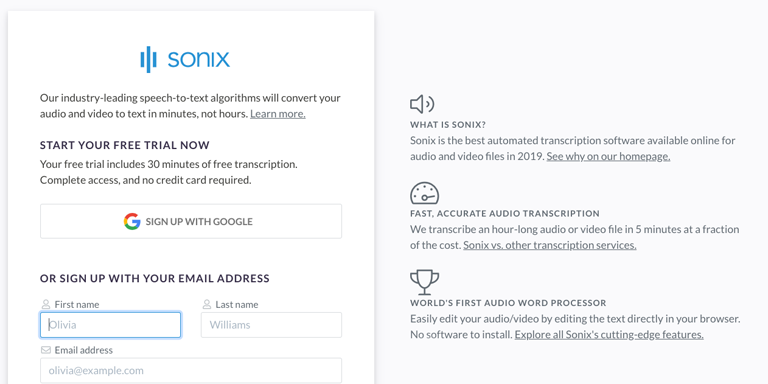
Step 1
Sign up for a free Sonix trial account—includes 30 minutes of free AU to captions conversion.
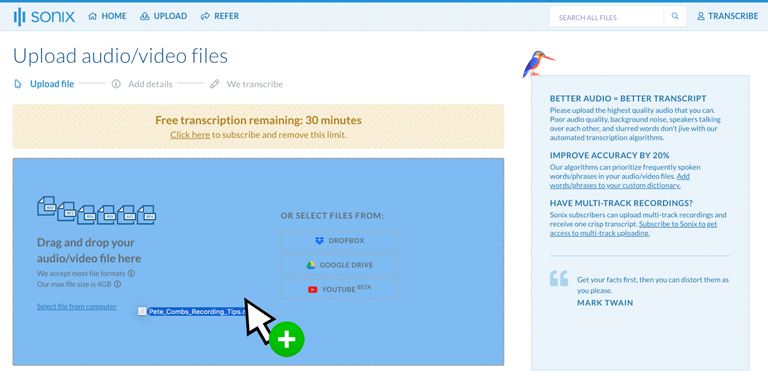
Step 2
Upload the Audacity Audio File file(s) (*.AU) from your computer, Dropbox, Google Drive, or by dragging it on the page.
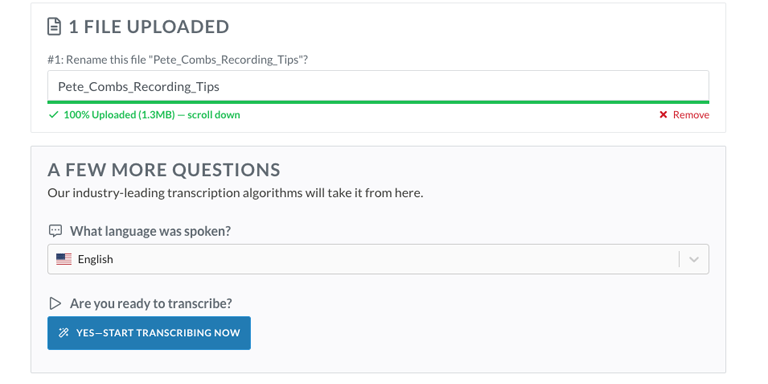
Step 3
Choose the language spoken in the uploaded AU file. We support over 53 different languages including Russian, Chinese, Spanish, and English. Click the 'Start Transcribing Now' button.
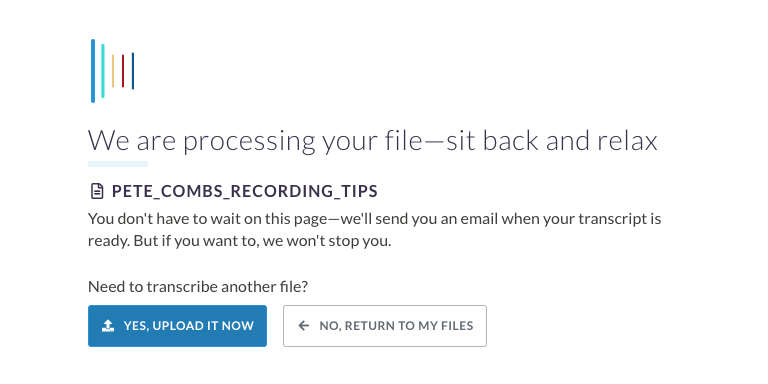
Step 4
Sonix will then automatically transcribe the audio from your AU file and convert it to a simple text format. Grab a cupcake, it will take only a few minutes.

Step 5
Use the Sonix AudioText Editor to polish your transcript before we convert it to a caption file. Simply type in your browser to correct any words in your transcript.
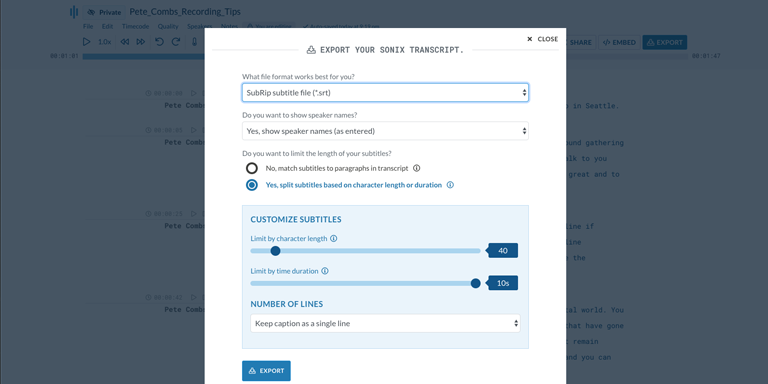
Step 6
Click the 'Export' button. Choose either 'Subrip subtitle file (.srt)' or 'WebVTT file (.vtt)' from the dropdown to download the closed caption version of your AU file. You can also adjust the character length and time duration length of each caption.
That's it! Your AU file has now been converted to closed captioning and is ready for the next step in your workflow!
Thousands of customers create closed captions from their AU files with Sonix 
Frequently Asked Questions for Audacity Audio File (*.AU) to subtitle 
What is a AU file?
Audacity, an open source audio editor, breaks long tracks into small pieces so it can edit them more efficiently. Thus, when you save an Audacity Project File (.AUP), Audacity will automatically create a _data folder that has the same name as the AUP file and breaks the longer audio file into smaller chunks that have the .AU extension. Thus, when Audacity opens up the AUP Project File, it loads the individual AU files in the correct sequence automatically. The user should not move or rename and AU files in the _data folder.
Does Sonix transcribe audio files with a *.AU file extension?
Yes, Sonix does automatically transcribe audio files with a .AU file extension. Sonix is an online audio to text converter. Convert any audio (au, mp3, m4a, wav, ...) or video (mp4, mov, avi, ...) file to text without installing any software! Sonix quickly and accurately transcribes *.AU files and converts them to text in a subtitle format.
Know anyone who needs to convert Audacity Audio File (.AU) to subtitle?
We'd appreciate it if you tell them about Sonix—the best way to convert AU to subtitle.
Other ways to convert your AU audio files with Sonix 
AU to text
Use the most accurate speech-to-text technology to convert files: AU to text.
AU to docx
Accurately transcribe your AU file to Microsoft Word Format (docx) so you can bring the transcript into your workflow.
AU to PDF
Easily transcribe your AU file to Adobe's Portable Document Format (pdf) so you can share them with colleagues.
AU to subtitles
Create subtitles for your AU files to make them more accessible for your audience.
AU to srt
Quickly create subtitles from your AU files and save them as SRTs, one of the most widely supported subtitle formats.
AU to VTT
Create more advanced captions for your AU files by using the latest caption format VTT (Video Text Tracks).
Create closed captions from your Audacity Audio File files with Sonix 
Sonix automatically transcribes and translates your audio/video files in 53+ languages. Easily search, edit, and share your media files. Sonix is an online, fully-automated speech to text service that quickly converts Audacity Audio File files to captions. Fast, accurate, and affordable. Millions of users from all over the world.
Includes 30 minutes of free transcription












